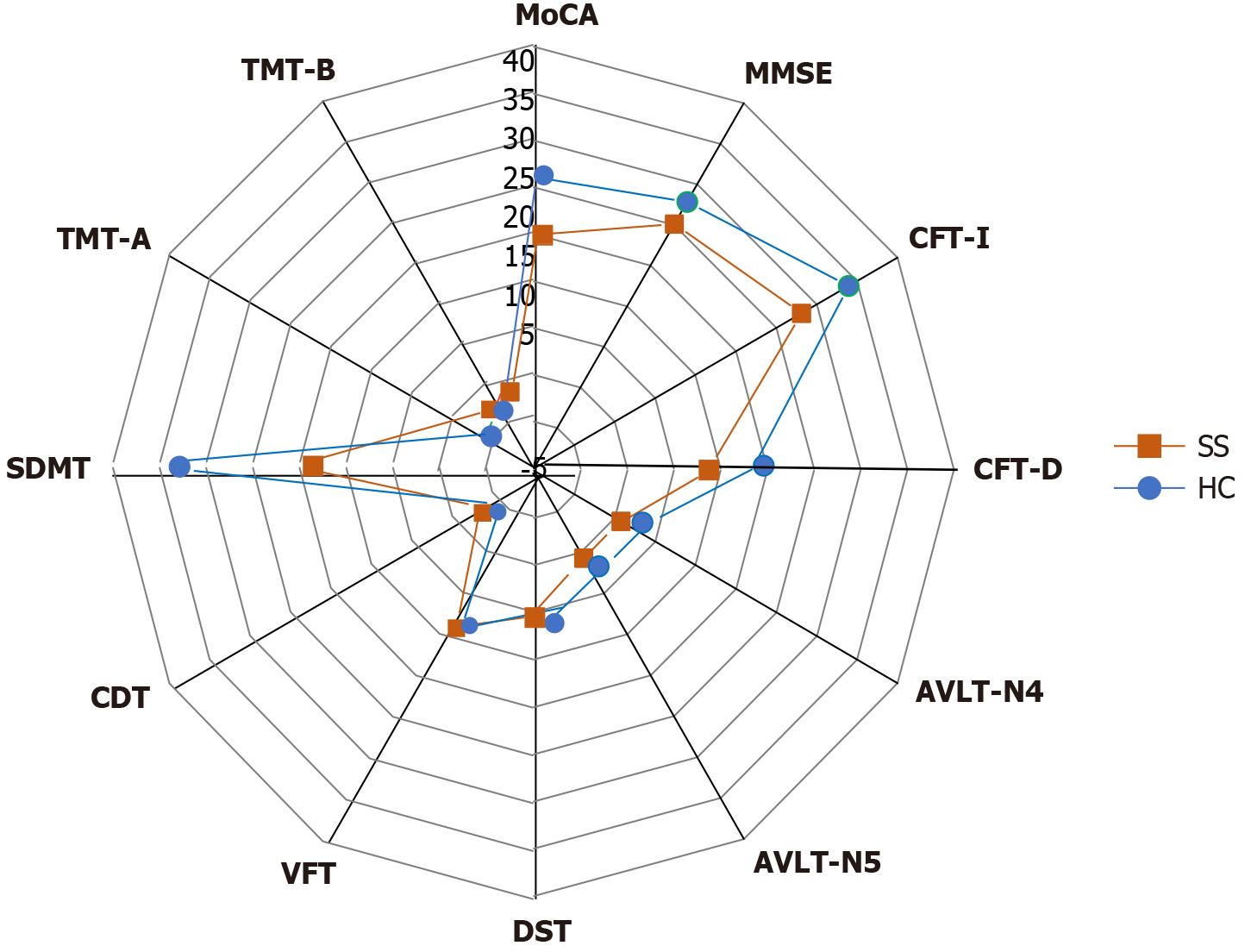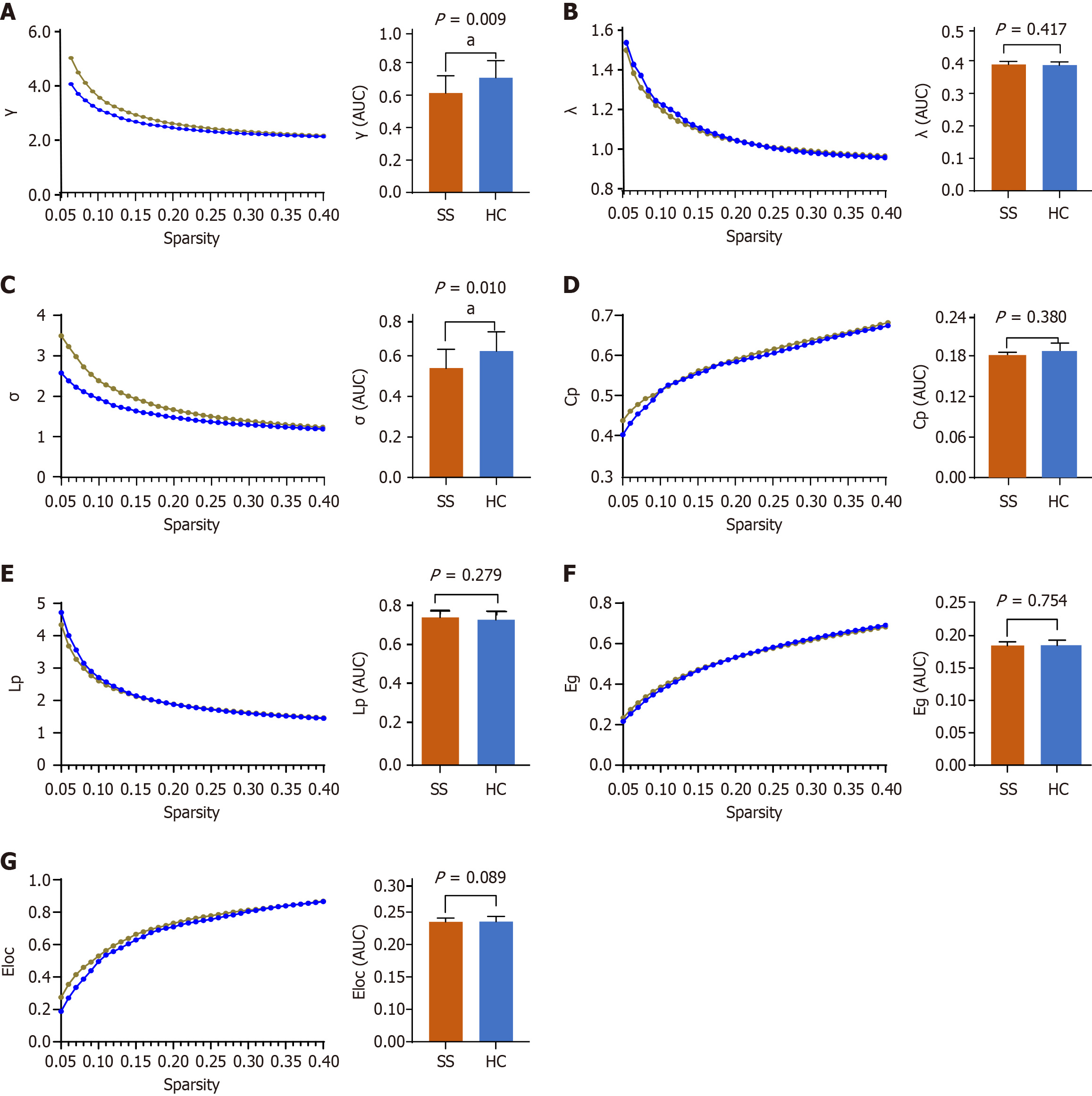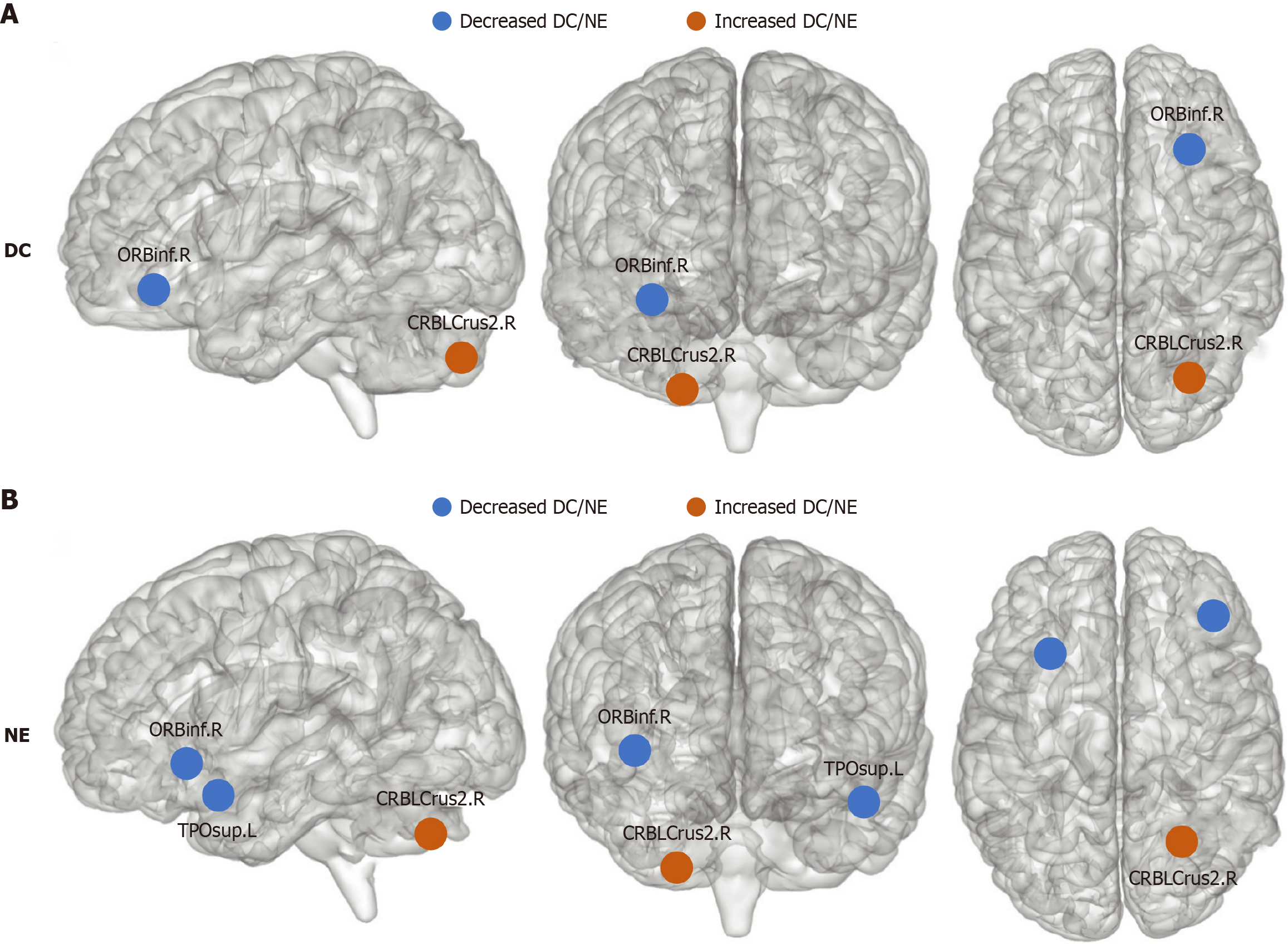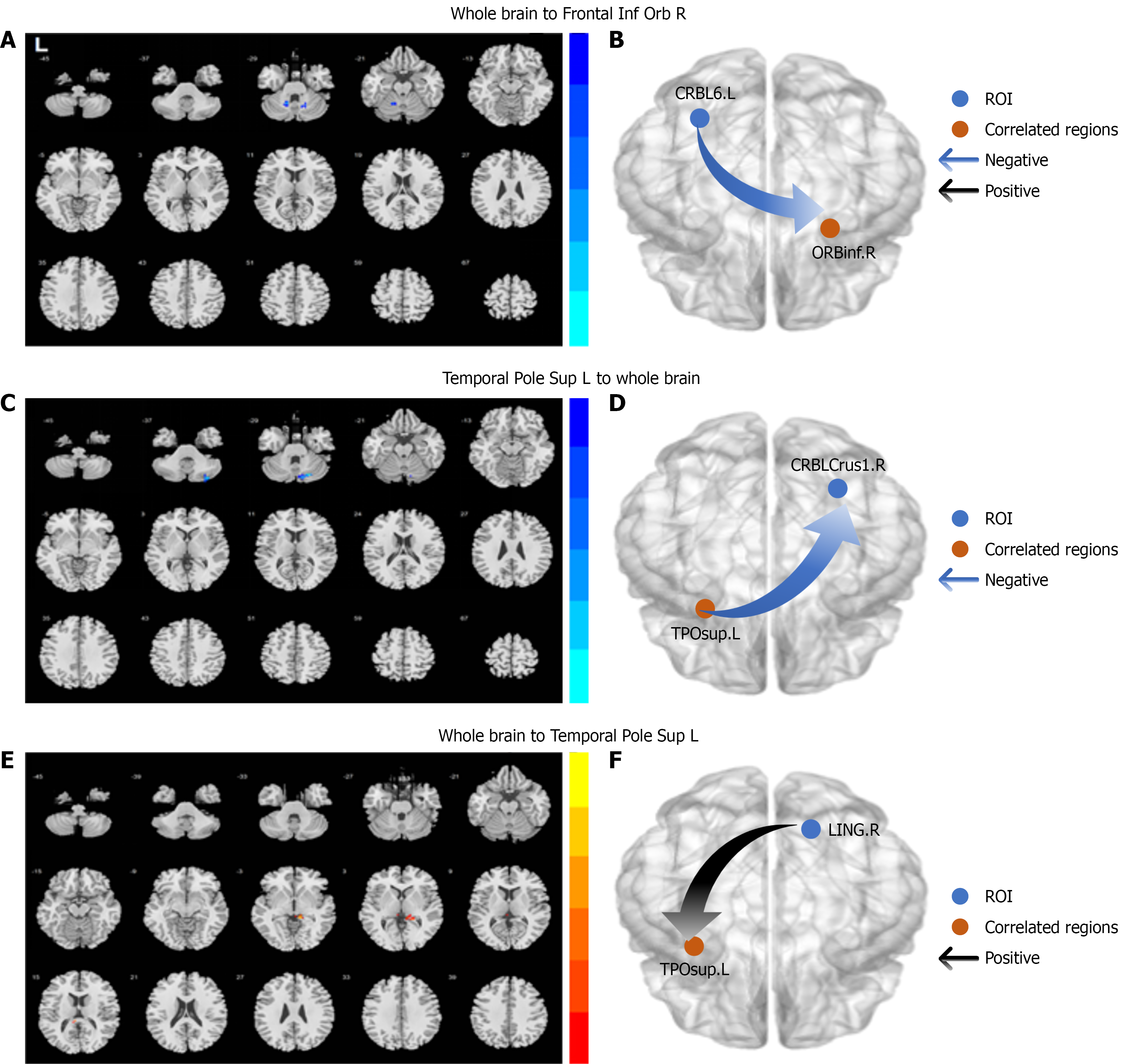Copyright
©The Author(s) 2025.
World J Psychiatry. Oct 19, 2025; 15(10): 108861
Published online Oct 19, 2025. doi: 10.5498/wjp.v15.i10.108861
Published online Oct 19, 2025. doi: 10.5498/wjp.v15.i10.108861
Figure 1 Graphical representation of the comparisons of cognitive performance between groups.
SS: Sepsis survivor; HC: Healthy control; MoCA: Montreal Cognitive Assessment; MMSE: Mini-Mental State Examination; CFT-I: Complex figure test-immediate; CFT-I: Complex figure test-delay; AVLT-N4: Auditory verbal learning test; AVLT-N5: Auditory verbal learning test; DST: Digit span test; VFT: Verbal f1uency test; CDT: Clock drawing test; SDMT: Symbol digit modalities test; TMT-A: Trail making test-part A; TMT-B: Trail making test-part B.
Figure 2 Changes of global properties of the functional brain networks with sparsity and the comparison of area under the curve of global properties.
A: γ of two groups at selected sparsity and comparison the area under the curve (AUC) of γ; B: Λ of two groups at selected sparsity and comparison the AUC of λ; C: Σ of two groups at selected sparsity and comparison the AUC of σ; D: Cp of two groups at selected sparsity and comparison the AUC of Cp; E: Lp of two groups at selected sparsity and comparison the AUC of Lp; F: Eg of two groups at selected sparsity and comparison the AUC of Eg; G: Eloc of two groups at selected sparsity and comparison the AUC of Eloc. SS: Sepsis survivor (orange); HC: Healthy control (blue); AUC: Area under the curve; Cp: Clustering coefficient; Lp: Shortest path length; Eg: Global efficiency; Eloc: Local efficiency. The left column stood for the sparsity range (0.05-0.4). The right column is the area under the curve. aP < 0.05.
Figure 3 Brain regions with positive degree centrality and nodal efficiency alterations.
Blue or orange node represents a decreased or increased degree centrality/nodal efficiency value respectively. ORBinf.R, right orbital inferior frontal gyrus; CRBLCrus2.R, right cerebellum Crus 2; TPOsup.L, left temporal pole of superior temporal gyrus. A: Compared to healthy controls, sepsis survivors had decreased DC in ORBinf.R and increased DC in CRBLCrus2.R; B: Sepsis survivors had decreased NE in ORBinf.R and TPOsup.L and increased NE in CRBLCrus2.R. DC: Degree centrality; NE: Nodal efficiency.
Figure 4 Granger causality analysis of effective connectivity between regions with abnormal local properties and other regions in the whole brain.
ORBinf.R, right orbital inferior frontal gyrus; CRBL6.L, left cerebellum 6; TPOsup.L, left temporal pole of superior temporal gyrus; CRBLCrus1.R: Right cerebellum Crus 1; LING.R, right lingual gyrus. Orange dots indicated ROIs, i.e., regions with abnormal local properties which were chosen as seed regions. Blue dots indicate correlated regions. The effective connectivity (EC) between correlated regions and the seed regions shows significant alterations. Blue and gray curved arrows indicated positive and negative causality respectively. The direction of the arrows indicated the EC directions. A: Compared to healthy controls, the EC between CRBL6.L and ORBinf.R in sepsis survivors significantly changed; B: The EC from CRBL6.L to ORBinf.R in sepsis survivors decreased; C: Compared to healthy controls, the EC between TPOsup.L and CRBLCrus1.R in sepsis survivors significantly changed; D: The EC from TPOsup.L to CRBLCrus1.R in sepsis survivors significantly decreased; E: The EC from LING.R to TPOsup.L in sepsis survivors significantly changed; F: The EC from LING.R to TPOsup.L in sepsis survivors significantly increased.
Figure 5 Correlation analysis between cognitive performance and topological properties.
A: Degree centrality (DC) value of CRBLCrus2.R negatively correlated with Mini-Mental State Examination score; B: DC value of CRBLCrus2.R negatively correlated with Montreal Cognitive Assessment (MoCA) scores; C: Nodal efficiency value of CRBLCrus2.R negatively correlated with MoCA scores. MoCA: Montreal Cognitive Assessment; DC: Degree centrality; NE: Nodal efficiency; MMSE: Mini-Mental State Examination.
- Citation: Li Y, Chen JQ, Wang H, Yang JJ, Ji MH. Frontal, temporal, cerebellar changes link to sepsis survivors' cognitive issues: A resting state functional magnetic resonance imaging study. World J Psychiatry 2025; 15(10): 108861
- URL: https://www.wjgnet.com/2220-3206/full/v15/i10/108861.htm
- DOI: https://dx.doi.org/10.5498/wjp.v15.i10.108861

















